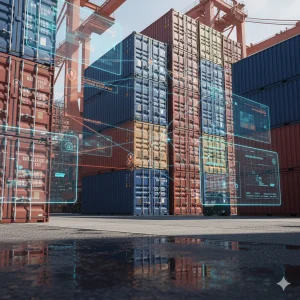Once considered a high-touch, low-volume compliance task, Politically Exposed Person (PEP) screening has now become a critical component of global AML frameworks.
In today’s connected world, political influence and its misuse rarely stop at national borders. Cross-border platforms, digital banks, crypto exchanges, and wealth advisors are all exposed to PEP risk, whether they realize it or not.
The stakes are high: onboarding a high-risk PEP without proper checks could expose your platform to reputational damage, regulatory action, and unwanted ties to corruption or sanctions.
As political influence grows more global and as regulatory expectations evolve, platforms need to rethink how they define, detect, and manage PEP relationships.
Who Counts as a PEP in 2025? It’s Broader Than You Think
Traditionally, a PEP was understood to be a senior politician, head of state, or top-ranking official. But in 2025, the definition has expanded. It now includes:
- Family members and close associates of PEPs
- Board members of state-owned enterprises
- Regional or municipal officials with financial control
- Executives of international public bodies (e.g., UN, WHO, IMF)
Even a business partner of a mayor, or a relative of a central bank official, may be considered a PEP under FATF guidance.
This expanding definition means platforms must adopt PEP screening logic that is both granular and global. It’s not just about who holds office; it’s about who holds power, directly or indirectly.
Why PEP Risk Isn’t Just Regulatory; It’s Reputational
PEPs carry a higher risk of involvement in bribery, embezzlement, and illicit enrichment due to their position of influence.
But even if no wrongdoing occurs, being linked to a politically controversial figure can damage a company’s brand and investor confidence.
Regulators expect enhanced due diligence (EDD) for PEPs, including:
- Source of funds verification
- Ongoing transaction monitoring
- Senior management sign-off before onboarding
Failure to implement these controls has led to multi-million dollar fines and regulatory blacklisting.
More importantly, platforms that mismanage PEP exposure can lose the trust of banks, partners, and users, particularly in high-risk regions.
The risk isn’t just legal. It’s relational and reputational.
The Challenge: PEP Lists Are Fragmented and Inconsistent
One of the biggest obstacles to managing PEP risk is the lack of a universal, reliable source of PEP data.
Many platforms rely on third-party databases or government disclosures, but these vary wildly in:
- Coverage (some exclude local or SOE officials entirely)
- Update frequency
- Language and transliteration inconsistencies
- Structure and tagging (e.g., primary vs indirect PEPs)
This inconsistency forces compliance teams to operate with partial data and guesswork, particularly when onboarding users from less transparent jurisdictions.
To mitigate risk effectively, platforms need systems that can merge, deduplicate, and correlate PEP records across fragmented datasets and map relationships beyond the primary individual.
Screening Is Just the Start. What Happens After You Flag a PEP?
Identifying a PEP is only the beginning. The next steps, risk scoring, EDD, and ongoing monitoring, are where many platforms struggle.
You need to assess:
- Does this individual hold real financial power, or is their role ceremonial?
- Are there unexplained wealth indicators or transaction anomalies?
- Is the PEP linked to any past enforcement actions, leaks, or scandals?
Effective PEP workflows should trigger:
- Enhanced documentation and justification
- Higher transaction monitoring thresholds
- Periodic re-verification of role and influence
- Escalation paths that involve compliance leadership
Managing PEP risk isn’t about blanket rejection; it’s about informed decisioning backed by auditable logic.
Global Platforms Need Continuous, Cross-Jurisdictional Monitoring
A user’s risk profile can change without notice. A business partner may enter public office. A family member could be sanctioned. A dormant account may suddenly activate after years of quiet activity.
That’s why global platforms require:
- Ongoing monitoring, not just point-in-time screening
- Jurisdiction-aware logic, so roles are scored differently across countries
- Relational awareness, to detect PEPs-by-association or lateral linkages
PEP risk isn’t static; it evolves with politics, scandals, and shifting alliances. Platforms that rely only on onboarding checks miss the ongoing risk exposure.
How IDYC360 Helps You Manage PEP Risk
IDYC360 equips compliance teams with advanced tools to detect, monitor, and document PEP exposure, without overwhelming the system.
Global, Enriched PEP Datasets
IDYC360 connects to 1,300+ global sources, ensuring coverage across central, local, and multilateral public bodies, refreshed in real time.
Name + Relationship Matching
Detect PEPs by name, alias, family tie, or business link. Our graph engine resolves identities across languages and ownership structures.
Jurisdiction-Aware Risk Scoring
PEP relevance is scored by role, geography, tenure, and exposure, so ceremonial or low-risk roles aren’t over-flagged.
Integrated EDD Workflows
Auto-launches enhanced due diligence tasks based on risk tier, with in-platform guidance and audit-ready documentation.
Continuous Monitoring
Status changes (e.g., newly appointed, resigned, or sanctioned) are captured instantly, triggering reviews and risk score updates.
Audit Trail Built-In
Every PEP-related decision is logged, timestamped, and justification-ready, ideal for both internal QA and external regulatory reviews.
With IDYC360, PEP screening becomes strategic, not reactive.
Final Thoughts
In today’s global economy, every platform, even digital-first, tech-native ones, must account for political exposure. Influence travels fast. Risk travels silently. And PEPs aren’t always obvious.
Navigating PEP risk requires more than just list matching. It requires contextual screening, intelligent escalation, and real-time awareness.
Platforms that treat PEP screening as a core part of AML, not just a regulatory box, are the ones that stay resilient in the face of reputational and regulatory pressure.
Ready to Stay
Compliant—Without Slowing Down?
Move at crypto speed without losing sight of your regulatory obligations.
With IDYC360, you can scale securely, onboard instantly, and monitor risk in real time—without the friction.











